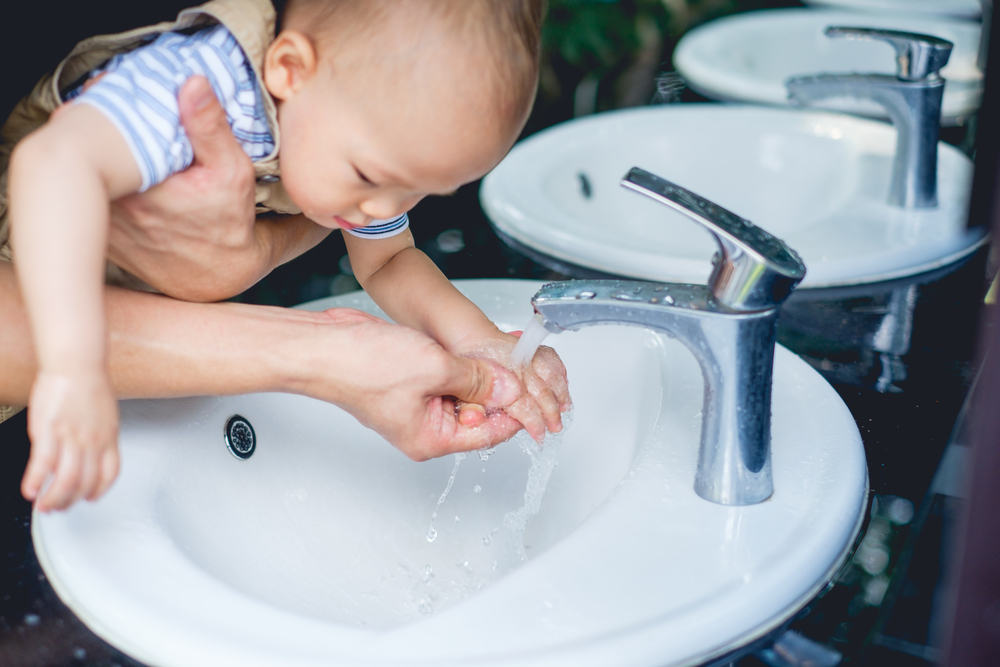How to maintain a healthy and safe environment with good hand-washing practices
The first years of life usually bring a fair amount of sickness because children’s immune systems are still developing and fighting off new infections. Infants and toddlers touch anything they can get their hands on, and then rub their eyes and put their hands in their mouths, all of which can spread germs.
When children are together in group settings, the chance of infection increases drastically. It’s important for caregivers to establish good hand-washing habits with the children in their care. It reduces sickness, making it a happier environment for children, caregivers, and parents.
When to wash hands for both children and caregivers
Getting into a routine of washing both the children’s hands and your hands will help things go more smoothly. It will also help establish a system for the children and give them the foundation to make it a habit long term.
The best times to wash infant and toddler’s hands are:
- Upon arrival at the child care program to wash off any germs that may have come from home or the ride in from home.
- Before and after receiving a bottle or food to ensure nothing is transferred during or after feeding.
- After diapering.
- After contact with the body, fluids to prevent the spread of those fluids around the program.
- Before and after playing in the water to prevent anything being spread when other children play in the same area.
- After handling pets to remove bacteria and allergens from the animal that could make its way to other children.
- When hands are visibly dirty such as after playtime, crafts, or an accident.
- Before going home to protect the child and family from any germs being taken home from the child care program.
It’s easy to get wrapped up in making sure the children wash their hands throughout the day, but it’s important that caregivers do as well. The best times for caregivers to wash their hands are very similar to the ones above with a few differences:
- Before preparing or serving food, so no bacteria is transferred to what the children will be eating.
- Before and after giving medication.
- After using the bathroom or changing a child’s diaper.
- After wiping noses and mouths or cleaning cuts and scrapes.
- After cleaning up or handling bodily fluids such as vomit, blood, or feces.
The basics of washing hands
Hand-washing is basic, but knowing the proper steps makes it easier to stick to so it becomes routine.
- Use warm or cold water to wet hands.
- Apply liquid soap and lather your hands.
- Scrub hands for 20 seconds, making sure to rub all areas of the hands, including between the fingers and under the nails.
- Rinse hands well.
- Dry hands with a disposable paper towel.
Other tips and things to think about
There are plenty of ways to help hand-washing along in other areas of the child care program and make it as accessible and easy to do as possible. Make sure sinks and toilet areas are cleaned at the beginning and end of every day. Toilets and changing areas should be disinfected after every use in addition to washing hands.
Check each sink area before the day starts to ensure there are enough paper towels and disposable wipes for the children. Sanitize toys in the morning as well and in between uses to reduce the spread of germs.
If you find yourself in a situation with no soap and water, disposable wipes are the best way to go. Hand sanitizer is not a safe option for children under 2 years old. The ethanol is toxic if ingested, which is easy to do when they put their hands in their mouth so frequently.
As toddlers get older, you can encourage them to wash their hands on their own, so it becomes more of an independent habit. Creating games or singing songs around the activity can make it more appealing for them too. “Happy Birthday” is just about 20 seconds long, so you can even use that song to make sure you’re washing long enough.
Establishing good hand-washing techniques and routines in your child care program is not only healthy for the staff and the children but it also helps set the foundation for long term habits. It can be challenging to manage at times, but it is worth it to stop bacteria and prevent infection.
The Virginia Infant & Toddler Specialist Network helps improve the quality of care for infants and toddlers through extensive resources, services, and education for caregivers. Learn more about how we can help you improve the standard of care.




